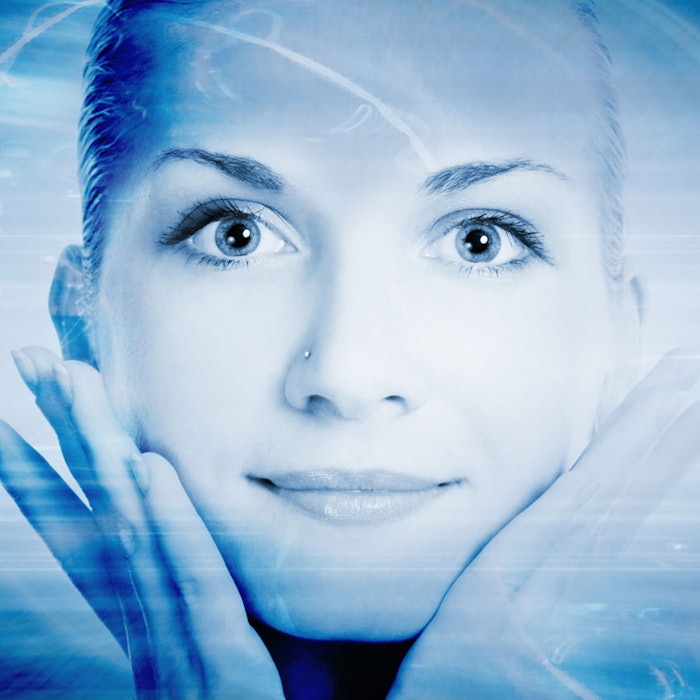
Learning and understanding the science behind skin is crucial as an esthetician or spa manager/director. The Advanced Education Conference at Face & Body Midwest had a science track that did just that, bringing the latest in ingredients, biology and evidence-based treatments to attendees.
Skin Color
The first class of the track was Pigmentation Disorders, Causes and Treatments by Michael Pugliese of Circadia by Dr. Pugliese. Pugliese dove into the function of the melanocyte, which he said one must understand to understand pigmentation. He went into how the role of the enzyme tyrosinase converts amino acid tyrosine into a new compound, which is then made into melanin by the action of more enzymes. Other methods of melanin reduction such as exfoliation or inhibition of melanin formation through enzyme blockage were also presented. He also spoke about specific recovery methods for melasma, inflammatory, hyperpigmentation and lentigenes. “If you can control inflammation, you can control pigmentation,” said Pugliese. While explaining the Fitzpatrick Skin Type Classificaiton system, Pugliese focused on the significance of protecting all skin colors. He suggested that skin professionals recognize the client's skin type prior to the treatment..
“[The scale is] good because it takes ethnicity into account,” he said. “Be very cautious when you proceed, especially with the darker skin types.”
Analyzing Acne
Mark Lees, Ph.D., Mark Lees Skin Care, Inc., was next in discussing Acne Detective: Effective Analysis of Problem Skin Conditions. Lees explained the different severity grades of acne—mainly through case studies—and how it is mostly genetic. “We inherit the amount of oil we produce,” he said. “The oilier skin is, the more likely your skin will have acne.”
Other factors play a role in causing skin irritation including hormones, lifestyle habits, environmental issues, makeup products and more, which Lees went into further. He also reviewed the types of ingredient factors helping prevent acne conditions from worsening.
A few cleansing tips he suggested included:
- Cleansing twice daily,
- Removing all makeup and
- Alternating every other night between hydration and a BPO wash.
Facial Massage Benefits
Post lunch, attendees had the opportunity to see Katerina Steventon of FaceWorkshops on her session, Professional Facial Massage: An Evidence-based Anti-aging Treatment. Steventon explained how a professional facial massage is considered a natural anti-aging alternative to surgery and injectables. She explained how this method enhances relaxation and well-being with the penetration of active ingredients, which reduces skin sagging and balances energetic pathways through the body. Steventon took the time to explain how different facial massage techniques are innovative and additionally, visibly benefit clients.
During her discussion, Steventon focused on skin being like a canvas. She had the audience scan attributes in each other’s faces for an impression for 11 seconds.
“Our brains scan for signs of age and health,” she said. “Skin texture is mainly about age and skin color is mostly about health.
Additionally, she had the crowd do face yoga and explained how face muscles need exercise. She also linked lifestyle to skin health, and clarified the significance of self-care at home. “Injured skin can affect mental health and vice versa, mental health can affect injured skin,” Steventon explained.
Sunscreen Structure
Farah Ahmed of the Personal Care Products Council then gave attendees insight on The Anatomy of Sunscreen. “One bad burn in childhood can double that child’s chances for skin cancer later in life,” explained Ahmed.
She shared the development, formulation and marketing processes of sunscreens and reviewed topics of what the FDA requires, how sunscreen works, sun protection factor and more. This class gave an overall insider’s view on properly protecting skin with sun protecting products. “It can’t just be about sunscreens and it’s not, there is just too much out there,” said Ahmed.
GMO and GMM Concerns
The final science session of the day was with Rebecca Gadberry, UCLA Extension, chatting about GMOs and GMMs: Should You Be Wary or Welcoming? Genetically-modified organisms (GMOs) and genetically-modified microorganisms were examined closely on pros vs. cons and whether new technologies outweigh risks of genetic modification and bio-engineered genes. “Genes change their expression naturally due to stress,” said Gadberry.
To support her discussion, she talked about how crops are genetically modified and shared facts such as there being eight mutations on corn in the last 9,000 years. These changes are referred to as selective breeding. “We adapted our environment for as long as we’ve been human,” explained Gadberry.
She closed with how these technologies are utilized in cosmetics and what the future holds. “It is normal and healthy to be cautious of new technologies,” she said.
Going Out with a Bang
If you happened to miss Face & Body Midwest this year, visit us at our next event in Northern California to catch up on the latest including wellness, treatments, products, business, beauty, science and more.










